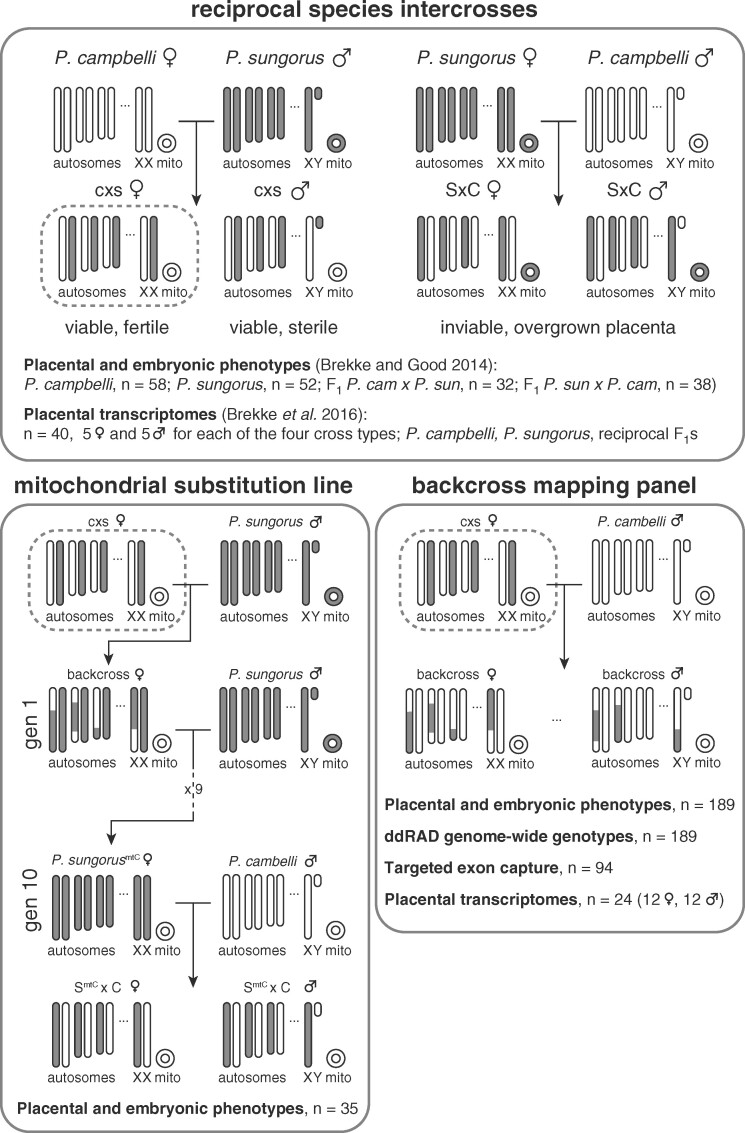Figure 1.
Summary of genetic crosses and experiments. Reciprocal species intercrosses between P. sungorus (gray chromosomes) and P. campbelli (white chromosomes) result in asymmetric placental overgrowth and inviability. Only females with a P. campbelli mother and P. sungorus father are both viable and fertile (c × s, indicated with a dashed box). The first generation cross with normal sized placentas is indicated with lowercase letters (c × s), and the reciprocal cross with overgrown placentas is indicated with uppercase letters (S × C). A mitochondrial substitution line was created through 10 generations of backcrossing hybrid females to a P. sungorus male, resulting in females with P. sungorus nuclear genomes and P. campbelli mitochondria (SmtC) that were then crossed to P. campbelli males. The BC mapping panel was created by a single generation of backcrossing a fertile hybrid female to a P. campbelli male, resulting in offspring showing a range of placenta phenotypes. Data types collected for each experiment are reported in the corresponding panels.

